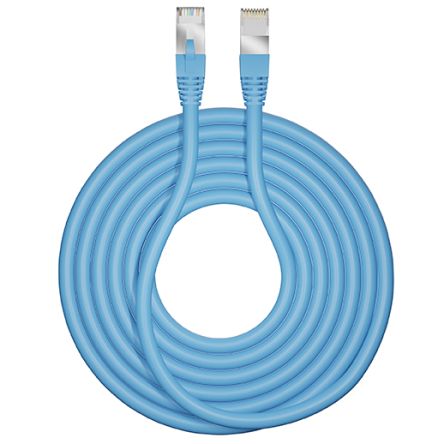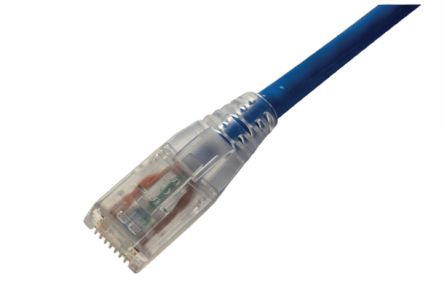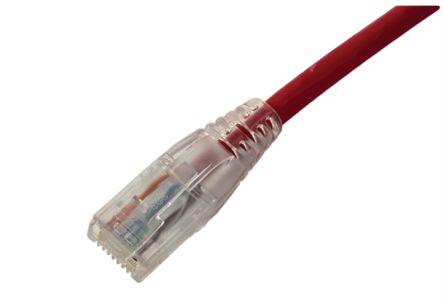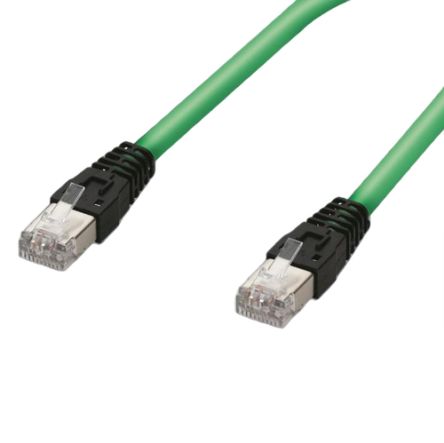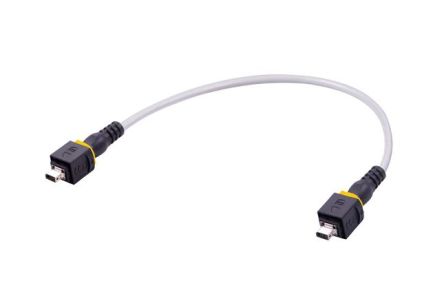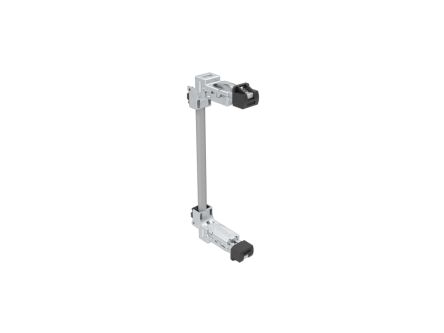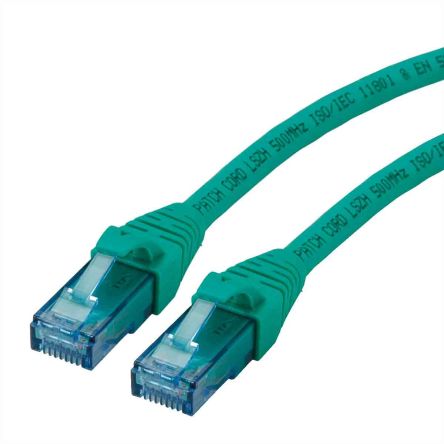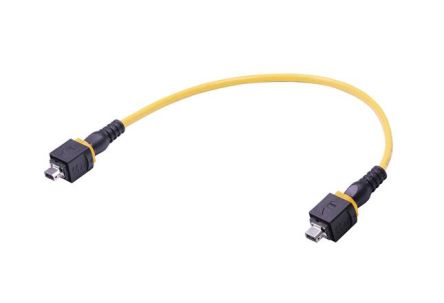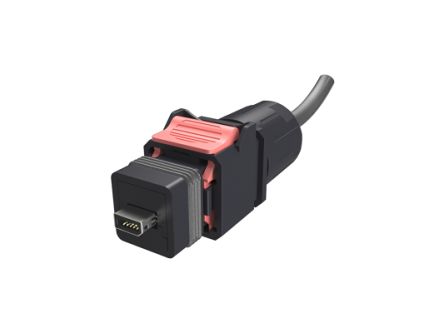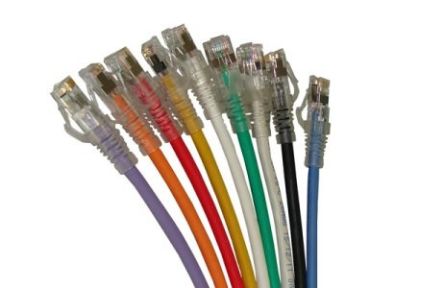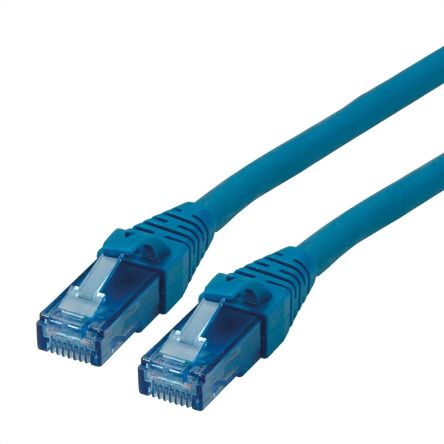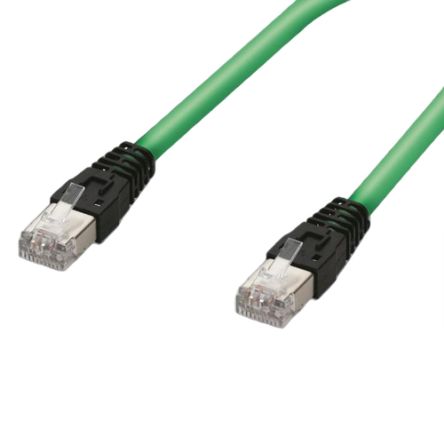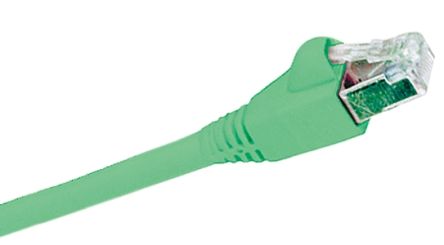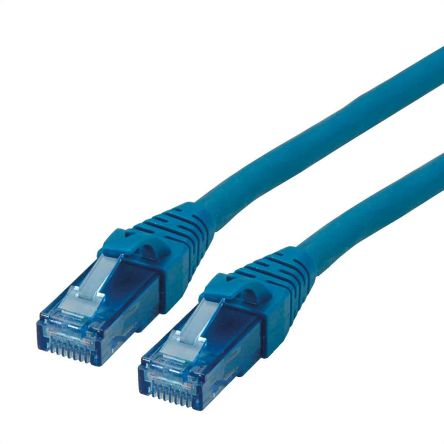- Automation & Control Gear
- Cables & Wires
- Enclosures & Server Racks
- Fuses & Circuit Breakers
- HVAC, Fans & Thermal Management
- Lighting
- Relays & Signal Conditioning
- Switches
- Batteries & Chargers
- Connectors
- Displays & Optoelectronics
- ESD Control, Cleanroom & PCB Prototyping
- Passive Components
- Power Supplies & Transformers
- Raspberry Pi, Arduino, ROCK, STEM Education & Development Tools
- Semiconductors
Ethernet Cable
Ethernet cables are the physical wiring used to connect devices within a wired local area network (LAN). They establish the connections between computers, routers, switches, and other networked devices, enabling reliable and high-speed data transfer. Ethernet cables are often preferred over wireless connections when stability, security, and consistent performance are critical.
Different Types of Ethernet Cables
Here are some of the most common types of LAN Ethernet cables, each belonging to a different category:
Cat 5 (Category 5): Cat 5 cables are an older standard of Ethernet cable, primarily designed for 100 Mbps networks. While not as common today, they may still be found in older installations.
- Cat 5e (Category 5e): Cat 5e patch cables are among the most widely used Ethernet cables. They support data transfer speeds of up to 1 gigabit per second (Gbps) and are suitable for most home and small office network applications.
- Cat 6 (Category 6): Cat 6 cables are an improvement over Cat 5e and can handle higher data transfer speeds, up to 10 gigabits per second (Gbps) over shorter distances.
- Cat 6e (Category 6e): Cat 6e Ethernet cable is designed to meet the new standards for enhanced performance. It offers improved transmission performance and alien crosstalk characteristics compared to Cat 6.
- Cat 6a (Category 6a): Cat 6a cables, also known as Cat 6 Augmented, offer even higher data transfer speeds, up to 10 Gbps over longer distances than Cat 6 cables.
- Cat 7 (Category 7): Cat 7 cables are designed for high-speed networking and offer data transfer speeds of up to 10 Gbps.
- Cat 8 (Category 8): Cat 8 cables are the latest addition to Ethernet cable categories and are designed for extremely high-speed data transfer.
- Cat 8.1 (Category 8.1): Cat 8.1 is a variant of Cat 8 cables designed for use in residential and commercial applications. It supports data transfer speeds of up to 25 Gbps.
Benefits of Ethernet Cables
What are the features and benefits of Ethernet cables?
- Physical Design: Ethernet cables typically consist of twisted pairs of copper wires encased in a protective outer sheath. Common types include "Category 5e" (Cat 5e) and "Category 6" (Cat 6), supporting speeds up to 1 Gbps and 10 Gbps, respectively.
- Connectors: Ethernet cables use standardised "RJ-45 connectors" at each end. These eight-pin connectors snap into Ethernet ports on devices, ensuring a secure connection.
- Ethernet Standards: Ethernet cables adhere to various standards, such as 10BASE-T, 100BASE-TX, and 1000BASE-T, which define their maximum data transfer speeds. Newer standards like 10GBASE-T enable even faster rates.
- Cable Length: The maximum recommended length for Ethernet cables depends on the specific standard and cable quality. Exceeding these limits may degrade signal quality and performance.
- PoE (Power over Ethernet): Certain Ethernet cables support Power over Ethernet (PoE), allowing both data and power to be transmitted over a single cable. This is useful for powering devices like IP cameras and VoIP phones.
- Colour Coding: Ethernet cables often follow a colour-coding scheme, such as TIA/EIA-568-B, to identify the order of wire pairs within the cable, aiding installation and troubleshooting.
How Much Do Ethernet Cables Cost?
The cost of an Ethernet cable can vary depending on several factors:
**Cable Length **
The length of an Ethernet cable is a significant factor in its price. Longer cables naturally require more materials, resulting in a higher cost. If your needs are limited, consider a short Ethernet cable to save on expenses.
Cable Category
Ethernet cables come in various categories (Cat 5, Cat 5e, Cat 6, etc.), each offering different performance levels. Higher-category cables generally cost more due to their advanced construction and capabilities.
Cable Material
Ethernet cables are typically made of copper but can also be constructed with other materials. The type of material used can affect the cable's price, durability, and performance.
How to Choose the Right Ethernet Cable for Your Needs
Choosing the right Ethernet cable involves balancing your network's speed and environmental needs with your budget. For standard home and office use, Cat 5e or Cat 6 cables often suffice, delivering reliable gigabit speeds. If you require higher bandwidth or longer distances, Cat 6a might be the answer. For outdoor or industrial applications, opt for a durable external or industrial Ethernet cable. At RS, our extensive selection of Ethernet cables ensures you find the perfect fit for your specific requirements, ensuring optimal performance and longevity for your network.
How to Order Ethernet Cables from RS?
Ordering Ethernet cables from RS is a straightforward and reliable process. As a trusted supplier, we offer an extensive selection of high-quality Ethernet cables from top brands like TE Connectivity, Phoenix Contact, Molex Premise Networks, and HARTING. You can easily browse our vast online catalogue to find the perfect cable to suit your needs, select your desired one and quantity, and proceed to checkout for secure payment and fast delivery.
How Delivery Works at RS Hong Kong
RS Hong Kong is committed to delivering your Ethernet cables and other products, such as Ethernet connectors and isolator switches, swiftly and efficiently. We offer a wide variety of delivery options for all sorts of budgets and timelines, for complete details, please visit our delivery information page.
